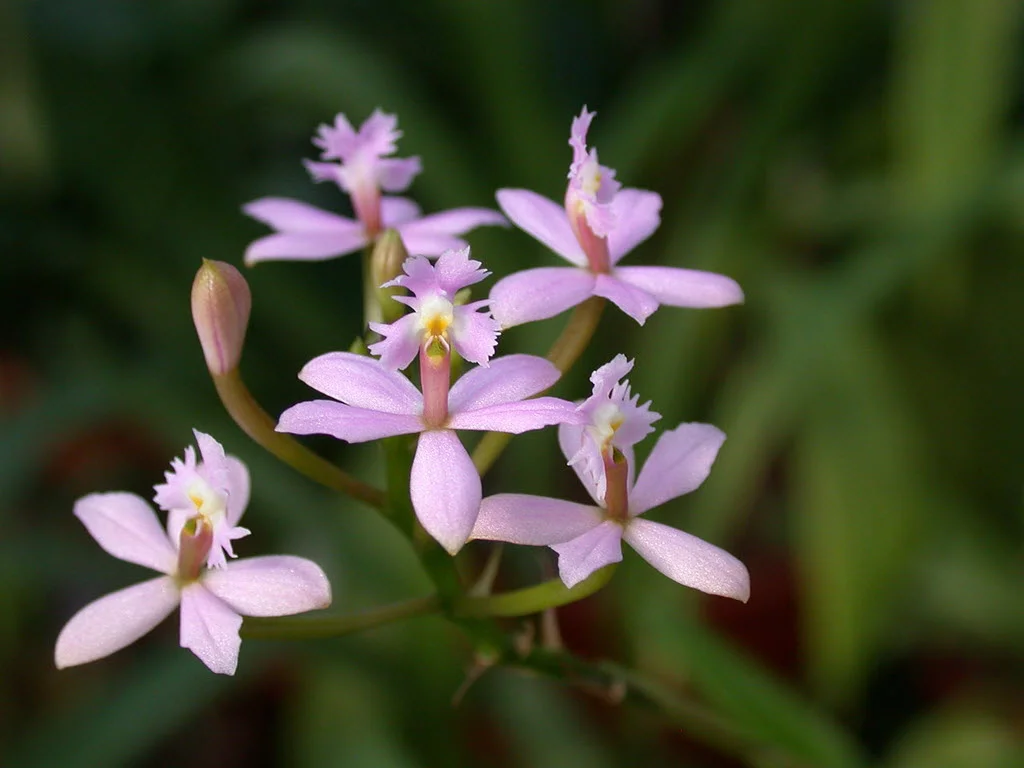Table of Contents
Pronunciation: ko-ree-AN-theez
Other Names: The Bucket Orchid
Introduction
The Coryanthes orchid is unusual (i.e. bonkers) in the way it pollinates. This orchid collects aromatic fluid in its base. Bees that are lured in fall into the flower's bucket trying to get the fluid, and they are forced to crawl through a very narrow tube to escape. In the process, the pollinia stick to the bee's legs, aiding in pollination.
Coryanthes verrucolineata
They are native to Central America, South America, and Trinidad. The flowers are large and odd-shaped, and they come in many different eye-catching colors. They also have very fragrant blooms and long slender stems.
Temperature
These orchids come from hotter areas in the world, and they need warm temperatures on a consistent basis to thrive. They don't tolerate large temperature fluctuations well. On average, your daytime temperatures have to stay right around 80°F to 85°F (27°C-29°C).
During the nighttime, temperatures should drop slightly to between 65°F to 70°F (18°C to 21°C). They won't tolerate temperatures much lower than 65°F (18°C) at any point during the year without damage.
Light
When it comes to light, the Coryanthes orchid likes bright, indirect sunlight. They can adjust to direct light, but you have to do this slowly to prevent damage. If you live in the northern hemisphere, you can place your orchid in a south-facing window or an east-facing window. If you notice that your Coryanthes isn't blooming as it should, try giving it more light.
As mentioned, your plant is susceptible to burning if it's placed in direct light. The leaves can develop yellow or brown spots or begin to turn brittle. If this happens, move your orchid out of the direct light.
Water and Humidity
This type of orchid is used to moderate amounts of water, especially during the early summer until the early winter. Water them liberally once a day, but make sure that your plant's roots don't stand in water as root rot is one of the biggest killers of these orchids.
If you're not sure that you're over-watering them, a good rule of thumb is to water when they approach dryness and keep them moist. During the late winter and early spring months, you can water them every few days as this is there more inactive period. The humidity levels should range between 50% to 70% year-round.
Feeding
This plant needs a good amount of fertilizer, and you should fertilize it once a week with 1/4 to 1/2 recommended strength fertilizer. From the spring to midsummer months, use a high-nitrogen content fertilizer to encourage growth.
You can switch this to a fertilizer with high phosphorus levels in the later summer and autumn months when it starts to go dormant.
Potting
It is a good idea to pot these orchids in hanging baskets like net pots or teak baskets because the flower stem comes out of the bottom of the pot, and their roots need good airflow. If you do attempt to grow them in pots, you need very loosely packed medium with shredded redwood bark that you keep very moist.
For a potting medium, you want a loose medium that is very breathable, but it retains moisture as well. We recommend a mix of one or more of the following mediums:
sphagnum moss,
coconut fiber,
fine fir bark,
Rockwool,
redwood bark.
You should repot your orchid every two years in the spring, when they outgrow their current pot, or if you notice them failing due to their growing conditions.
Video
See this amazing Nat Geo Wild movie of how bees find themselves trapped by the alluring scents of orchids. Spot the Coryanthes orchid!
Orchids are some of the most fascinating plants in the planet. Scroll through all the orchid types in our comprehensive list.
See More Amazing Orchids











